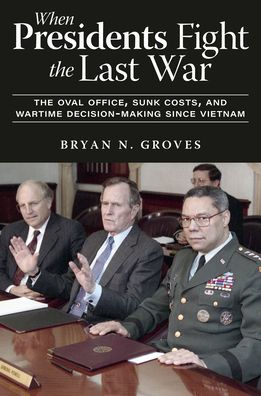Offering five case studies, author Bryan N. Groves examines presidencies from Ronald Reagan to Barack Obama and explains how commanders in chief have chosen to escalate or de-escalate major conflicts based on what they stood to gain—or, more importantly, lose—in the process. As Groves reveals, in spite of the different contexts, policies, and priorities that defined these administrations, all shared a remarkably similar approach to war adjustments.
When Presidents Fight the Last War provides a unique look inside the Oval Office throughout a half century of inflection points while offering vital insights and predictive tools to handle future sunk cost scenarios.
Offering five case studies, author Bryan N. Groves examines presidencies from Ronald Reagan to Barack Obama and explains how commanders in chief have chosen to escalate or de-escalate major conflicts based on what they stood to gain—or, more importantly, lose—in the process. As Groves reveals, in spite of the different contexts, policies, and priorities that defined these administrations, all shared a remarkably similar approach to war adjustments.
When Presidents Fight the Last War provides a unique look inside the Oval Office throughout a half century of inflection points while offering vital insights and predictive tools to handle future sunk cost scenarios.

When Presidents Fight the Last War: The Oval Office, Sunk Costs, and Wartime Decision-Making since Vietnam
256
When Presidents Fight the Last War: The Oval Office, Sunk Costs, and Wartime Decision-Making since Vietnam
256
Product Details
| ISBN-13: | 9781985902787 |
|---|---|
| Publisher: | University Press of Kentucky |
| Publication date: | 09/02/2025 |
| Series: | AUSA Books |
| Pages: | 256 |
| Product dimensions: | 6.12(w) x 9.25(h) x (d) |
